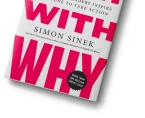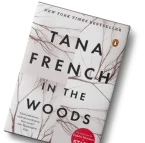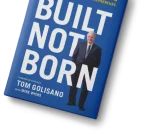
Writing a children’s book is a dream for many, but self-publishing it yourself can make that dream come true even faster.
Self-publishing a children’s book gives you complete control over your story, your illustrations, and your timeline. You don’t have to wait months (or years) for a traditional publisher to say “yes.” If you have a story that can spark imagination or teach a valuable lesson, self-publishing puts it into the hands of children and families faster than ever before.
In this article, you will learn:
- How to plan, design, and self publish a children’s book from start to finish
- What tools and platforms are best for children’s book self publishing
- Ways to make your book stand out with smart edits and strong visuals
Now, let’s look at why more authors are choosing to self publish children’s books today.
Publishing a Children’s Book?
Our expert ghostwriters help turn your bedtime stories into beautifully illustrated children’s books. Storytelling + Publishing = Sorted.
Talk to an ExpertWhy Publish Your Own Children’s Book
Self-publishing a children’s book is more than just skipping the traditional publishing route—it’s about gaining the freedom to tell your story, your way.
1. You Keep Full Creative Control
Traditional publishers often want changes to fit their brand, market trends, or audience preferences. With self-publishing, you make the final call on everything: the storyline, the characters, the illustrations, and even the title. This is especially valuable for personal, niche, or culturally specific stories that traditional publishers may overlook.
2. Faster Time-to-Market
Traditional publishing can take 12–24 months from contract to bookshelf. Self-publishing, by contrast, can take just a few weeks or months—depending on how ready your content is. This means your book can be released while the idea is still fresh and relevant.
3. Reach Your Readers Directly
Self-publishing lets you build a direct relationship with your audience—parents, teachers, and young readers. You can interact with them through your website, social media, or events, and get feedback faster. That can help with future books or building a loyal reader base.
4. Higher Royalty Rates
Most traditional children’s book deals offer royalties around 5–10% of net sales. With self-publishing, you can earn 35–70% depending on the platform and format. That gives you more revenue per copy sold, especially if you’re marketing your book well.
5. Ideal for Special Topics or Classroom Stories
Self-publishing is perfect for stories that may not appeal to mass markets but deeply resonate with specific communities, cultures, or educational goals. If you’re writing a book inspired by your classroom, your culture, or your child, self-publishing ensures it sees the light of day.
Turn Your Child’s Dream Into a Book
We ghostwrite and publish heartwarming stories for kids. Full support with writing, design, and publishing.
Start Your JourneyPlanning Your Children’s Book
Before you jump into writing or illustrating, it’s important to plan your children’s book with your young audience in mind. The clearer your plan, the easier it will be to create a story that connects and succeeds.
1. Define Your Target Age Group
Children’s books are not one-size-fits-all. The content, language, and visuals need to match the developmental stage of your readers. Here’s a quick breakdown:
- Ages 0–3 (Board Books): Simple words, repetitive phrases, bright visuals
- Ages 3–5 (Picture Books): Short sentences, basic story arc, illustrations on every page
- Ages 5–7 (Early Readers): Slightly more text, basic dialogue, easy vocabulary
- Ages 7–9 (Chapter Books): Simple chapters, more plot and character development
Knowing your age group helps you choose vocabulary, sentence structure, and illustration styles that fit.
2. Choose a Theme or Message
Most successful children’s books teach something valuable—whether it’s kindness, friendship, honesty, or dealing with big feelings. Ask yourself:
- What do I want children to feel or learn after reading this?
- How can I make that message fun, not preachy?
Stories with heart, humor, and emotional depth tend to resonate most.
3. Create a Simple Yet Powerful Story Arc
Even the simplest children’s book needs a beginning, middle, and end. Start with a clear problem or question, guide the character through a challenge, and end with resolution or growth. Children love patterns, repetition, and satisfying endings.
A common structure:
- Introduce the character and their world
- Present a challenge or problem
- Show their journey or attempt to solve it
- Offer a fun or heartfelt conclusion
4. Keep Language Playful and Engaging
Rhymes, repetition, onomatopoeia, and rhythm can all enhance your storytelling. These tools make the story more memorable and enjoyable for both kids and the adults reading to them.
Have a Story Kids Will Love?
Let our team craft it into a beautiful children’s book with stunning illustrations and catchy language. End-to-end publishing support.
Let’s Create TogetherIllustrations: Finding the Right Artist
Illustrations are often what make a children’s book truly come alive. In many cases, they’re just as important as the words—or even more so. Choosing the right illustration style and illustrator is one of the most crucial steps in the self-publishing process.
1. Match the Style to the Story
The age group you’re targeting will guide your illustration choices:
- Board books need bold, simple visuals with high contrast and minimal detail.
- Picture books often use vibrant, whimsical artwork with lots of expressive characters.
- Early readers and chapter books might include black-and-white sketches or minimal imagery.
Look at popular books in your niche to understand what visual styles resonate with your audience.
Free Guide: The Only List You Need: Top 4 Book Marketing Services for Self-Published Authors
2. Hire an Illustrator Within Your Budget
You don’t need a massive budget, but you do need quality. Here are your options:
- Freelance artists: Use platforms like Fiverr, Upwork, or Reedsy.
- Art students: Reach out to local colleges or art schools.
- Stock illustrations: Affordable but less custom; use sites like Storyblocks or Canva Pro.
Expect to pay anywhere from $10 to $200+ per illustration depending on the artist’s experience and the complexity of your vision.
3. Communicate Clearly
Once you hire an illustrator:
- Share your manuscript and describe the mood of each scene.
- Provide reference images if possible.
- Set clear timelines, revision limits, and payment milestones.
A great collaboration can turn your story into a visually stunning experience that captures a child’s attention from the first page.
Want to Self-Publish a Kids’ Book?
From idea to bookshelf—we help you write, design, and publish children’s books that spark imagination.
Book a Free CallEditing and Feedback Before Self Publishing a Children’s Book
Even though children’s books are short, editing them is no less important than editing a novel. Every word counts, and a strong edit can take your story from “okay” to unforgettable.
1. Hire a Professional Editor (If You Can)
A children’s book editor understands how kids read and how parents choose books. They’ll help you:
- Refine your story arc
- Improve rhythm and word choice
- Remove confusing or unnecessary details
If you’re on a budget, consider a “manuscript critique” instead of a full edit—it’s often more affordable and still very helpful.
2. Get Feedback From Real Readers
Read your book aloud to:
- Children in your target age group
- Parents and teachers
- Librarians or early education specialists
Watch their reactions closely. Do they laugh, get bored, or ask questions? Their responses can help you fine-tune both the story and the pacing.
3. Avoid Common Editing Mistakes
- Overcomplicating language
- Inconsistent character behavior
- Flat or unresolved endings
Simple, clear, and emotionally engaging is always the goal.
Illustrated Children’s Books Start Here
Our ghostwriting and publishing experts bring your magical children’s story to life with vibrant visuals and creative storytelling.
Get Started TodayFormatting and Design
A professional look matters. Poor formatting can make even the best story feel amateurish.
1. Interior Layout
Tools like Canva, Book Bolt, Adobe InDesign, or Reedsy Book Editor can help you design your pages. Keep these tips in mind:
- Use large, easy-to-read fonts
- Leave plenty of space between lines
- Align images with text so they don’t compete
For print books, make sure you choose the correct trim size (like 8.5” x 8.5” or 8” x 10”).
2. Cover Design That Pops
Your cover should:
- Be colorful and eye-catching
- Clearly communicate the theme or tone
- Look great as a thumbnail (especially important for Amazon!)
Hiring a professional cover designer is worth the investment. A strong cover can make or break your book’s sales.
Your Story Could Be a Child’s Favorite
We specialize in writing and publishing children’s books that entertain, educate, and inspire. Let’s publish yours next.
Claim Free ConsultationChildren’s Book Self Publishing Options
There are several ways to get your children’s book into the world.
1. Print-on-Demand (POD)
With POD, your book is only printed when someone orders it—no need to buy hundreds of copies upfront.
- Amazon KDP and Estorytellers are top options
- Great for beginners and low upfront cost
- Good distribution through online retailers
2. Ebooks
While less common for picture books, ebooks can work well for early readers and chapter books. You can publish to:
- Amazon Kindle
- Apple Books
- Kobo or Google Play
Be sure to test on multiple devices—some formats don’t handle images well.
3. Hybrid Publishing
Some companies offer done-for-you packages (editing, design, printing) while still giving you creative control. Examples include:
- BookBaby
- Lulu
- Blurb
These options cost more, but save time and offer a middle ground between self-publishing and traditional publishing.
Children’s Book Idea? We’ll Do the Writing
Even if you just have an idea or message, our expert ghostwriters can develop a fun and engaging children’s story for you.
Talk to a Book ConsultantSelf-Publishing Platforms
Let’s look closer at the major platforms for self publishing children’s books:
1. Amazon Kindle Direct Publishing (KDP)
- Free to use
- Fast setup (you can publish in a day)
- Print and ebook options
- Wide reach on Amazon.com
Perfect for beginners. Downside: Amazon takes 40–65% of each sale depending on the format and pricing.
2. Estorytellers
- Better bookstore and library distribution
- Professional print quality
- ISBN required
Best for those who want to be in physical stores or schools. There’s a small setup fee unless you use promo codes.
3. Other Options
- Lulu: Great for photo-heavy books and wide distribution
- Blurb: High-quality printing, especially for visual books
- Draft2Digital: Ebook distribution made simple
4. ISBNs and Barcodes
Amazon will assign a free ISBN for your print book, but it’s platform-specific. If you want to sell elsewhere, buy your own from Bowker (U.S.) or your country’s ISBN agency.
Pricing, Royalties & Distribution
1. Set a Smart Price
For a paperback picture book, the sweet spot is usually $7.99 to $11.99. Ebooks for children typically range from $0.99 to $4.99.
2. Understand Royalties
Here’s a rough guide:
- Amazon KDP print books: You get 40–60% after printing costs
- KDP ebooks: Choose 35% or 70% royalty plans
- IngramSpark: You set your wholesale discount and pay printing costs
Use each platform’s royalty calculator to test different price points.
3. Where Your Book Can Sell
- Online retailers (Amazon, Barnes & Noble, Bookshop.org)
- Schools and libraries
- Local indie bookstores
- Your own website or events
Offering signed copies or bulk pricing can help with outreach to schools or parenting groups.
Marketing Your Children’s Book
Don’t skip this step. Book Marketing can be just as important as writing.
1. Build a Launch Plan
Start marketing before your book launches:
- Share sneak peeks on social media
- Collect emails with a free downloadable coloring page
- Send review copies to parent bloggers or teachers
2. Create a Website and Social Presence
Your website can host:
- A buy link
- Story background
- Author bio
- Activities or printables related to the book
Instagram and Facebook are great for sharing illustrations and behind-the-scenes content.
3. Use Offline Strategies
- Do readings at libraries or bookstores
- Offer free copies to local schools
- Join local author events or book fairs
Word-of-mouth is powerful, especially among parents and teachers.
Make Learning Fun With Your Own Book
We help educators, parents, and dreamers publish engaging children’s books—no experience needed!
Schedule a Free CallMaintaining Momentum
Once your book is live, keep the momentum going.
1. Ask for Reviews
Gently ask happy readers to leave a review on Amazon or Goodreads. Reviews help boost visibility and credibility.
2. Think Series
If your book does well, consider turning it into a series. Kids (and parents) love familiar characters and worlds.
3. Expand Your Offerings
Activity books, coloring pages, or educational guides can make your brand stronger. You can also turn your story into a classroom resource.
Conclusion & Next Steps
Self-publishing a children’s book takes work, but it’s 100% doable and incredibly rewarding.
You now know:
- How to plan, illustrate, edit, and design your book
- Where and how to publish it yourself
- Ways to market your book and grow your audience
The next step? Get into promotion. Check out our upcoming post: “How to Publish Your First Children’s Book“ for actionable tips to get your story into the hands of more readers.
Your story deserves to be told and now you have the tools to bring it to life.






























